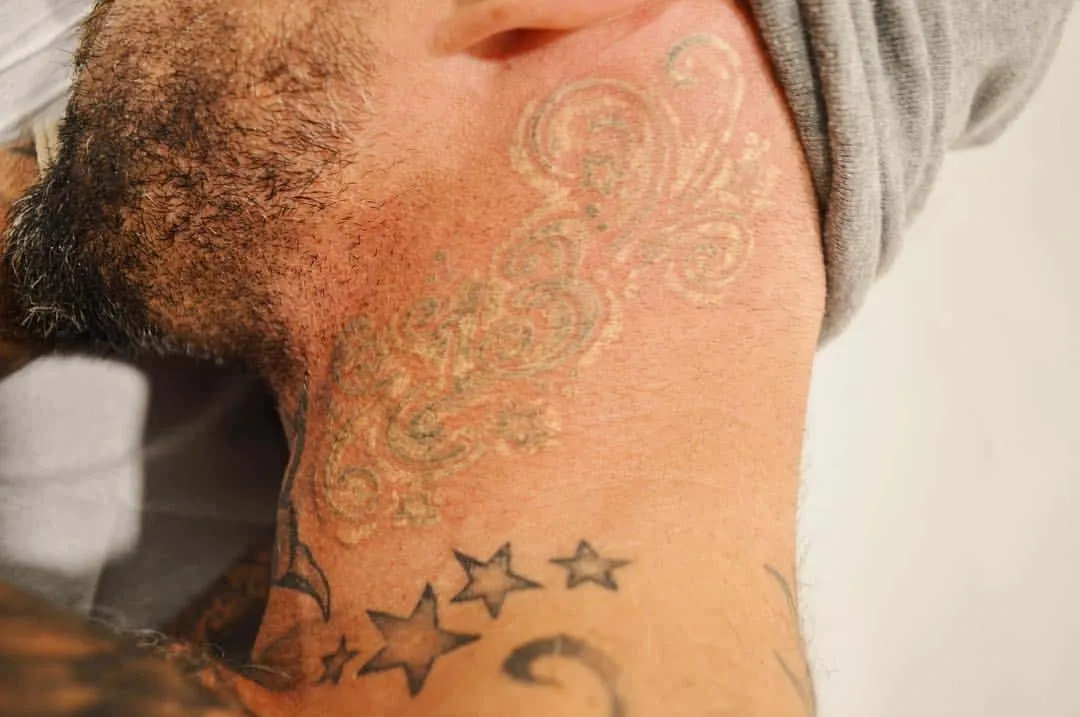Most people are aware that tattoos are permanent tattoo removal job salary, but few realize the risks associated with this statement. All tattoo inks are organic and contain trace amounts of chemicals which enter the bloodstream during the tattooing process. This can create a reaction when a foreign object comes into contact with the ink. Such an incident could lead to: inflammation, acute allergic reaction, fibrosis, scarring (even partial), anaphylactic shock… It’s important to note that these symptoms may not appear right away! And those who disagree with taking it lightly will have another point of view – “there is no such thing as a tattoo removal miracle”.
1. Fibrosis
In the first few years following the tattooing process, changes occur in the tissue around the tattoo. The body’s response to these foreign substances is to harden areas surrounding them. This causes a thickening of the skin which is often painful and sometimes may lead to severe itching or burning.
2. Scarring (Partial)
If the fibrosis has not completely covered the tattooed area, scar tissue will form during this stage which can cause different kinds of complications and must be addressed by a physician in order to prevent any long term harm to health.
3. Scarring (Complete)
This stage is the worst. Even when the fibrosis has completely covered the tattoo, the body’s reaction has left a stronger and visible mark on the skin. Severe itching can be felt and this creates an open wound preventing any form of healing process.
4. Anaphylactic Reaction
The rarest of all complications; this is a condition which affects almost 100 people every year. It’s known as anaphylaxis and its symptoms are: swelling of the face, larynx, neck, throat, lips and tongue; difficulty in breathing; general weakness; reddening of skin around the nose; runny or stuffy nose; nausea and sometimes vomiting. It’s also possible to have chest pain, dizziness and shock.
5. Erythema (Redness)
Erythema is a reaction that occurs in people who are allergic to the components in the ink process. It can be accompanied by burning, itching, tingling and redness of the skin. In some cases erythema may turn into a full blown rash. While anaphylactic shock is extremely rare, it’s often associated with this type of reaction since it can be caused by any foreign substance that comes in contact with the ink during tattooing or healing process. According to Dr Haffner: “There is no such thing as a tattoo removal miracle”.
6. Allergic Reaction
This is the most common type of reaction. It often appears as inflamed redness and swelling during the tattooing process. Some people have an allergic reaction to the dyes another person’s skin may not be compatible with their own body’s chemistry. The body reacts with a kind of rash that is accompanied by itching, burning and redness. This often happens in areas where the skin is thinner such as ears and eyelids.
7. Acute Dermatitis
This is the stage of skin inflammation which is often accompanied by itching and burning. Acute dermatitis can be caused by an allergic reaction to the tattoos or to the dyes used during tattooing. The normal process of healing from a tattoo is accompanied by redness and itchiness while acute dermatitis is accompanied by yellowish-brown scabbing, blisters and peeling of the skin in certain areas. Some people have experienced severe cases accompanied by severe headaches and fevers, but it usually disappears with time.
8. Scabbing
Scabbing is a natural part of the healing process. During the first two or three days following the tattooing process, scabbing occurs. This can be accompanied by itching or burning sensation and/or pain. The instructions for caring for a fresh tattoo in this stage include: keeping it clean, using an antibacterial cream and avoiding contact with water for up to 48 hours.
9. Fever
Fever is common when scabbing caused by dermatitis is left untreated; this condition may last one to three days before disappearing. Some cases have been reported where fever lasted up to six days after seeing a doctor and receiving treatment (antibiotic cream).
10. Joint Pain
Fever is often accompanied by joint pain and inflammation where there is no rash. The pain usually disappears with time; however, some people experience this type of problem for months after a healing procedure.
11. Other Complications
In rare cases, complications may occur from tattooing or healing process such as: infections of the skin, nerve damage (resulting in temporary paralysis), tissue loss resulting in severe pain at the site of the tattoo or healing process, infection due to pressure or scarring of incision point and even permanent facial paralysis (can’t move left eyebrow alone).
12. Anesthesia Reactions
This is a serious condition which requires immediate medical attention. It’s rare but it occurs. The symptoms to look for include: allergic reactions, stinging, swelling and itchiness of the skin and even loss of consciousness.
13. Cellulitis
Cellulitis is an inflammation of the deeper layers of the skin which may occur as a result of bacterial infection. When it’s left untreated, cellulitis can spread to surrounding tissues and joints resulting in severe health problems or even death. A tattoo can make it easier for bacteria to enter the bloodstream through a cut or scrape while scabbing keeps bacteria in one place where it can easily enter the body through the new tattooed area.


